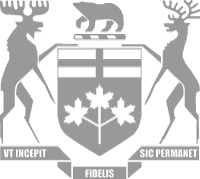
Montfort to prioritize primary care at Orléans Health Hub
In November 2024, the Montfort Hospital released their new strategic plan for the hospital and the broader array of services it provides to the community. Read the plan here.
As we know, it has been apparent for some time that while the services offered at the Aline-Chrétien Health Hub are an important addition to our community, the hub hasn’t fully lived up to what the community was told was coming 15 years ago when it was first announced.
I am thrilled to see that the Montfort has put ensuring primary care at the Orléans Health Hub as its first priority in their new strategic plan.
While this won’t mean family doctors will work out of the Hub tomorrow, it does mean that the Montfort understands the challenges we face in Orléans, and is committed to fixing them by making better use of the jewel that is the Aline Chrétien Health Hub.
Now that we’ve convinced the Montfort to make this a priority, we have to convince the Ford Government to pony up the dollars necessary to fund it. This will take hard work and persistence, and I will continue to pressure the government to make the healthcare investments we need.
A doctor for everyone

My colleagues and I have announced a plan for a new approach to family medicine in our province.
I recently shared the news about the Montfort’s new priority to add family medicine to the Aline-Chrétien Health Hub at the corner of Mer Bleue Rd. & Brian Coburn Blvd. I also mentioned that more ideas would be coming.
As you know, 2.5 million Ontarians are currently without a family doctor. Moreover, there are over 2,000 family doctors practicing today who are 60 years or older. They care for more than 3 million additional people – people who will be stranded when their doctor soon chooses to retire.
With an aging population and so many people disconnected from primary care, there is a growing risk that many acute and chronic conditions aren’t being diagnosed or treated in a timely manner.
In Ontario:
• 75% of deaths every year are a result of chronic diseases, like diabetes or heart disease.
• About 300,000 new cases of heart disease are diagnosed each year.
• About 1.3 million people have diabetes.
• About two million people live with chronic respiratory diseases.
• Over one million people report experiencing mental health or addiction issues annually.
Health outcomes can be improved and lives can be saved and extended through early detection, treatment and follow ups by a family doctor.
A secure and stable relationship with a family doctor is essential for lowering the personal, social and financial burden of chronic diseases, and achieving personal wellbeing.
The Proposal
My colleague the MPP for Don Valley East, introduced a motion in the Legislature last week which outlines our proposal – Motion 177.
Our proposal, which has been endorsed by the Ontario Medical Association, plans to train, attract and retain 3,100 family doctors by 2029.
The proposal would:
- The proposal would see the creation of two new medical schools and expand capacities in existing medical schools,
- doubling the number of medical school spots and residency positions.
- It would also accelerate the process to integrate at least 1,200 qualified and experienced internationally trained doctors.
Aligned with the announcement from the Montfort, our proposal would structure all new primary care clinics under a team-based delivery model, such as Community Health Centres or Family Health Teams.
By advancing team-based care and expanding the use of technology, our proposal would free doctors to focus on what matters most — supporting patients, not drowning in paperwork.
By improving the Ontario Health Team network, the plan is to massively expand access to family doctors practicing in teams close to your home — the intent is to connect you to a family doctor close to your home, available evenings and weekends, and integrated with home care and mental health services.
Currently, family doctors in Ontario spend almost 19 hours a week doing paperwork. This is valuable time that could be better spent serving patients, instead of filling out forms.
We want to see the expansion of the use of AI and enhancing virtual appointments to provide both doctors and patients with convenience and ease of access. We also want to transition to using interoperable medical systems for physicians, hospitals, pharmacists and allied health providers so that medical records can be shared with everyone inside the patients’ circle of care. In the 21st century, let’s end the use of fax machines.
We will end the penalties doctors receive when their patients use walk-in clinics and incentivize them to have more fulsome service hours.
You deserve to have a trusted relationship with your doctor who is available and invested in the best interest of your health — no matter your age, health conditions or where you live.
This will be an expensive endeavour, we estimate that it will cost roughly $3 billion. But we also believe that ensuring EVERY Ontarian can access a family doctor is a basic core service for the provincial government. If we are going to get Ontario back on track, we must refocus on the basics we all need and deserve for the taxes we pay.
If the government stops wasting precious tax dollars on corporate giveaways to insiders, legal battles they know they will lose and constant changes in direction, Ontario’s economy and budget is more than adequate to ensure that we all have a family doctor.
